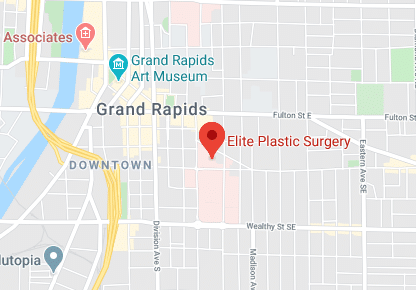
We can treat and, if necessary, operate to correct trigger finger in our Elite Plastic Surgery patients.
What is trigger finger?
Trigger finger is clinically known as stenosing tenosynovitis. It occurs when inflammation narrows the space within the sheath that surrounds the tendon in the affected finger. If the condition becomes severe, the affected finger can become locked in a bent position.
What are the symptoms of trigger finger?
Trigger finger can affect any finger, including the thumb. It may affect more than one finger at a time and can involve both hands. Symptoms of trigger finger usually progress as the inflammation constricts the sheath more and more. These are typical symptoms:
- Finger stiffness, particularly in the morning
- A popping or clicking sensation as you move your finger
- Tenderness or a bump (nodule) in the palm at the base of the affected finger
- Finger catching or locking in a bent position, which suddenly pops straight
- Finger locking in a bent position, which you can’t straighten
What causes trigger finger?
Our tendons attach our muscles to our bones. A protective sheath surrounds each tendon in the body. Trigger finger occurs when the sheath in the affected finger becomes irritated and inflamed. This interferes with the normal gliding motion of the tendon through the sheath. If this irritation is prolonged, scarring, thickening, and the formation of bumps can form in the tendon that further impede smooth motion.
How is trigger finger treated?
At Elite, we use different treatments for trigger finger, depending both on the severity and the duration. Anti-inflammatory drugs relieve the pain, but usually don’t address the swelling that is constricting the tendon.
- Therapy can include rest or the use of gloves with gripping. A night splint can be used to keep the affected finger in an extended position for up to six weeks. The splint helps the tendon rest. Stretching exercises can maintain mobility.
- If conservative treatments aren’t working, we may next try steroid injections. The steroid is injected near or into the tendon sheath. This may reduce inflammation and allow the tendon to glide freely again. These injections can be effective for up to one year.
- Percutaneous release is not a surgery, but is slightly invasive. We insert a sturdy needle into the tissue around your affected tendon. We then move the needle and your finger to break apart the constriction that is impeding the smooth movement of the tendon.
- If all of these options aren’t working, we may opt for surgery. We make a small incision near the base of your affected finger. We then cut open the constricted section of tendon sheath.
Do you have the symptoms of trigger finger? Call the team at Elite Plastic Surgery, (616) 459-1907, and let’s check it out.


No comments yet.